What is amazing about this wonderful planet we live on is the diversity of ecosystems, weather, climate, and life. This diversity, however, can be challenging for those looking to adapt druidry or other nature-based spiritual practices to their practices. Particularly challenging is the concept of the wheel of the year, especially if trying to apply the wheel of the year in a non-temperate climate setting. Thus, today’s post extends some of my earlier discussions about wildcrafting your own druidry, which include developing your own wheel of the year; in considering the role of observances, activities, and rituals; and in developing distinct symbolism for your work. I’m going to continue this discussion today by talking about a further way to work with a seasonal approach from a wildcrafted and observational way and continue wheel of the year development! So let’s get going!
The Wheel of the Year and Why It Might Not Fit Your Practice
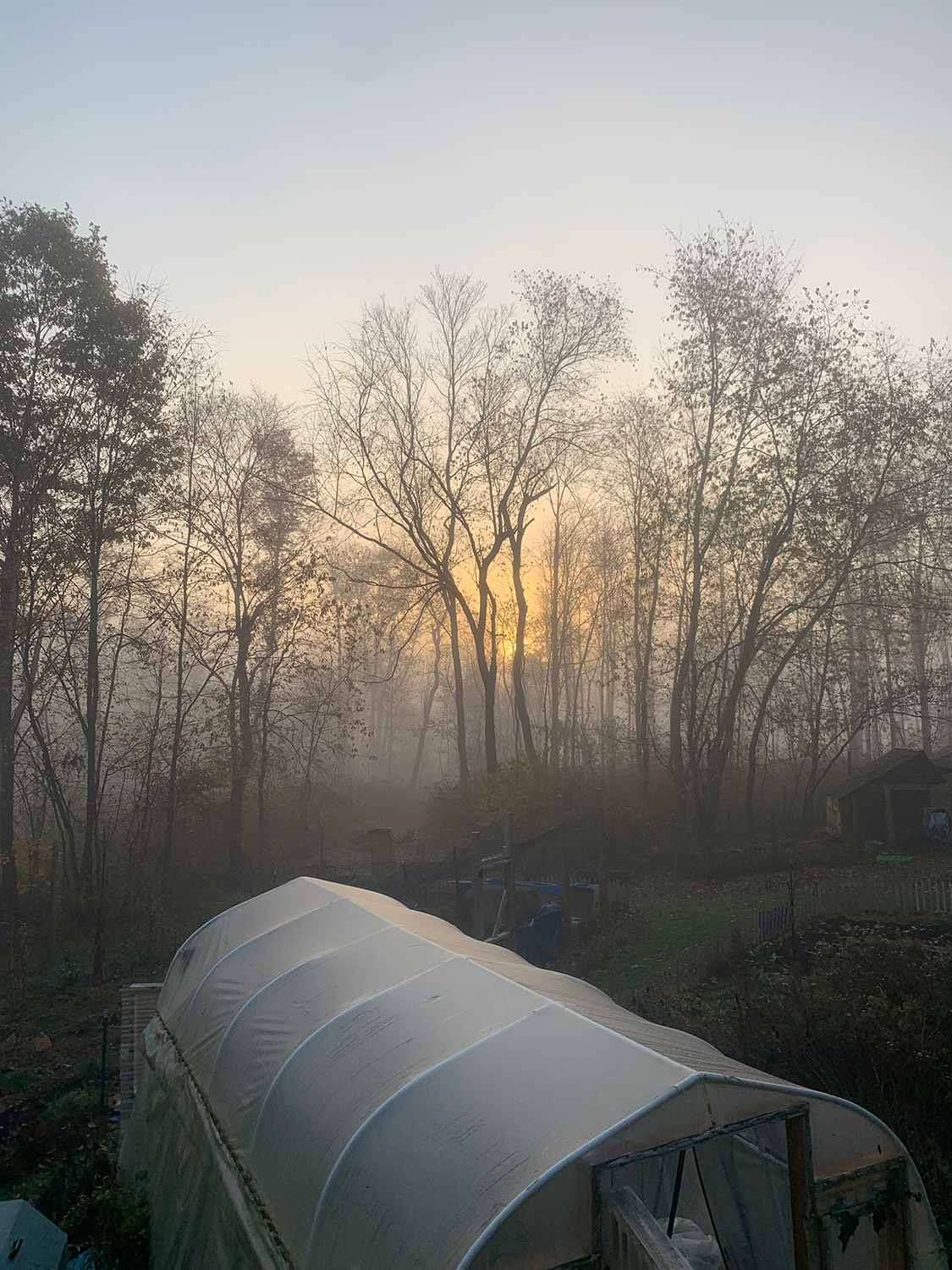
For many, the wheel of the year in a standard sense with standard meanings (see here) is problematic and troublesome, not always fitting or holding meaning in their practice. This is for at least two reasons. First, I have found that in working with new druids to adapt their practices to their local ecosystem, the idea of thinking in “four seasons” can be really limiting. Druids in a variety of ecosystems not have four seasons so the eightfold wheel may not make sense. Second, even those living in areas that traditionally did match up may now be seeing changes as climate change is causing changes to our ecosystems and weather. Things are not what they were 100 years ago, or even 25 years ago.
The entire principle of the wheel of the year is that it is a modern mash-up of a set of old agricultural holidays from the British Isles, put together in the 1960s by Ross Nichols and Gerald Gardener. This wheel of the year construction fits parts of Eastern North America and Europe, certainly the British Isles, and allowed both Druidry and Wicca a set of consistent practices. Thus, if you live in an area that has four distinct seasons (temperate regions of Europe and North America), chances are, it might make some sense to you. But more druids live in regions that do not fit this cycle, making it challenging to create meaning. The wheel of the year has two pieces:
The cycle of the sun: The solstices and equinoxes are ancient holidays celebrated by many peoples across time. They are entirely determined based on the cycle of light and dark, which is a constant on our planet. In other words, regardless of what is happening on the earth, we can always use the path of the sun and the light in the world to observe the light of the sun and year. While it is important to note that the available light impacts weather, there are also things that are happening on the earth that can be accounted for. Regardless, in AODA Druidry and in other traditions, the times of greatest light (Summer Solstice), greatest darkness (winter solstice), and the two days of balance (fall and spring equinoxes
The cycle of the earth: The specific weather, the waxing and waning of blooming, rain, frost, or fog is all dependent on where you live. This is where things often become more challenging for people who want more than the cycle of the sun as part of their own localized seasonal observances. The first challenge is that while we think in distinct seasons. But that’s not really accurate. In the land, changes happen slowly and the landscape gradually changes from one thing to another. It’s just like a sunrise or sunset–humans have named distinct parts of the day as night, dusk, daylight, and twilight–but these are full of smaller transitions, each moment being distinct. You will experience those states, but you’ll experience a lot in between. The second challenge is that because we have terms for seasons (spring, summer, fall, winter), we tend to try to fit the world into the terms we create. That doesn’t always work. In other words, we’ve been conditioned so much to think about seasons in terms of the four, and stepping out of that conditioning to really deeply observe may actually benefit us deeply.
The Wheel Challenge: Your Ecosystem for Year
So what do you do? How you develop a holistic and realistic wheel of the year that makes sense for you and your situation? I would suggest rooting it in observation and interaction with the living earth–hence the “wheel challenge.” Here’s the basic practice:
- Spend time in nature or with nature as close to where you live as possible (e.g if you have a daily hiking trail in a local park, use that trail. If you have a backyard, use that backyard). The goal here is to get you as close to nature at your own home as possible.
- Try to observe nature at least twice a week for 10-20 minutes.
- Keep some kind of record of your observations: photographs, videos, sketches, journal entries.
- In observing, note anything that changes: bloom times, snow melting, fogs rolling in, etc. the goal is to document what is happening in your ecosystem so that you can identify any “seasonal shifts” that occur with regularity.
- Try to disavow yourself of the regular notions of “seasonality” e.g it is spring so these things happen and instead, simply observe
This approach doesn’t require much of a daily investment and can be built into existing spiritual practices (like spending regular time in nature, daily meditation, etc). But for me, this approach reaped extremely rich rewards.
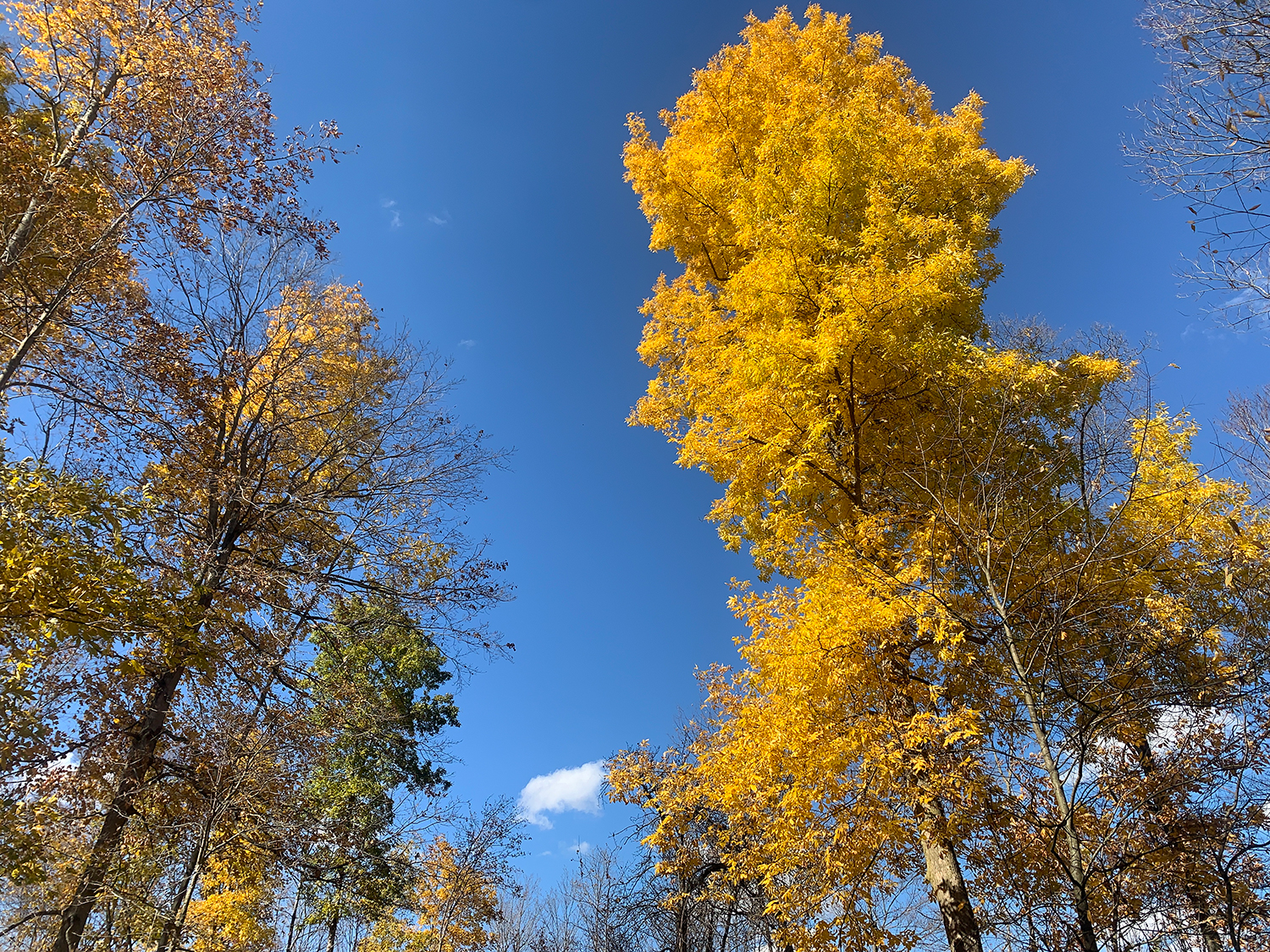
I’m posting this at a time when we have finished the growing season for the year (just after Samhain) and thus, the seeds of the new year are upon us. I started my own practice of observation a year ago, last Samhain, which made sense as the clear demarcation of the end of the previous agricultural season and the transition to the next. By all means, though, start whenever you feel inspired.
My Example: The Unfolding of the 12 Phases of the Four Seasons
I spent the last year doing this the above challenge. I took daily walks on my landscape, I documented bloom times, took photographs, and also visited my tree (from the Tree for a Year challenge), and spent time regularly in my Druid’s Anchor spot I also noted any time that I could really sense a “major shift” in my landscape (for me, this was first light frost and first freeze, budding of the trees, first snow, the first summer storm, etc). At the end of the year of observation (this past Samhain), I asked: Which observations or events led to major shifts in the landscape? What seasonal markers seemed present? What is their timing?
This practice reaped rich rewards in several different ways. First, I was able to document most of the blooming plants on our property; I took photos, compiled information, and learned a lot more about where I live. I identified several new edible and medicinal plants I did not know before. I also found one critically endangered plant, a rare form of Jacob’s Ladder. My nature knowledge really increased by focusing my energy in this way and spending more time photographing and documenting things systematically.
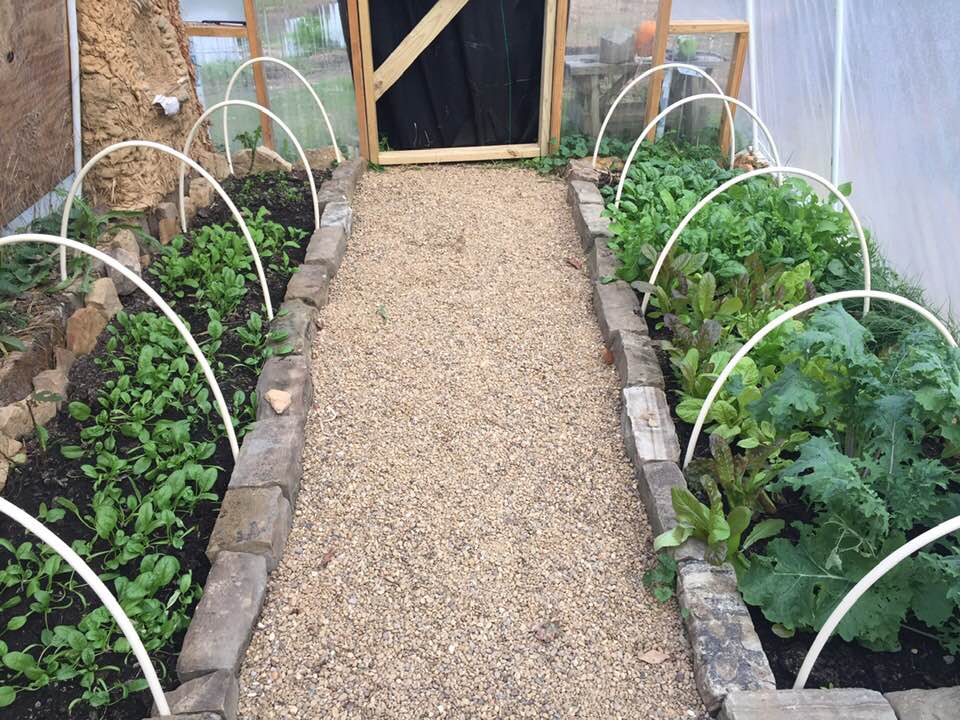
Second, I was able to develop a 12-fold pattern of the seasons. I learned that each of the four seasons had three phases where I live–so I’m actually looking at a pattern that is twelvefold (or 3 within 4) rather than a basic four-season pattern here in Western PA. I am so excited about this discovery and it is going to really help me add a new layer to my wheel of the year. Now, my plan will be to celebrate the seasons in a 12-fold way. Here is my draft of my revised wheel of the year based both on what is happening in my local ecosystem as well as what is happening on our homestead.
Spring
- Early Spring: Maples stop running and bud out, signifying the beginning of spring. Nettle and skunk cabbage emerges. Occasional snows and cold temperatures, ice, and freezing rain, with many days above freezing. A bit of green can be found on the land.
- Mid Spring: Cool-season crops (brassicas) can go in the ground (in the greenhouse and outside with cover). Herbs start to emerge in the garden. Perennials start to come out across the land. Kayak can come out on a warm day. More trees bud and leaves start to unfurl.
- The Spring Equinox usually marks a turning point to mid-spring (but not always).
- Late Spring: Hawthorn blooms, marking the end of the frosts and freezes. The last frost passes by mid-May. Planting out warm crops and planting seeds. Dandelions, wild violets, and serviceberry bloom. Wild apple flower.
- Beltane coincides with the blooming of the hawthorns and the arrival of late spring.
Summer
- Early Summer: Garden is fully planted and begins to take off. Harvest peas and spring greens. Leaves are fully out and “full”. Oaks bloom.
- Mid Summer: Perennial herbs are ready for first harvest (yarrow, lemon balm, catnip, parsley, and more). Cukes and beans are ready to start canning. Clovers and herbs growing strong. Black raspberries start to ripen. Elderberry flowers.
- The Summer Solstice usually marks midsummer.
- Late Summer (Lughnasadh): The land is at its peak; gardens are full and abundant. Sunflowers and Jerusalem artichokes begin to bloom. Tomatoes start to ripen. Start seeds for fall cool-season crops. Wild blackberry and wild blueberry crops are abundant. Mayapple fruits ripen. Bonset and Joe Pye weed bloom. Elderberry ripens.
- Lughnasadh usually marks the peak of late summer.
Fall
- Early Fall: Goldenrods and asters start to bloom and the land turns golden. The apples start to drop from the trees. The first dying back is noticeable as grasses and plants go to seed. We can tomatoes 3x a week. Fall crops go into the gardens. Joe Pye weed starts to go to seed.
- Mid Fall: First light frost happens and gardens start to die back. Fall crops go into the greenhouse. The asters continue to bloom. Harvest squashes, gourds, and pumpkins as the vines die back. Leaves begin to change. Acorns start to drop and continue throughout mid and late fall. Towards the end of mid-fall, Chestnuts drop.
- The Fall Equinox usually marks mid-fall.
- Late fall: Late fall is marked by the first freeze or hard frost (under 30 degrees). This radically transforms the landscape as nearly everything dies back. Maples and cherries are bare, oaks begin to go crimson and gold. Garlic is planted. The days grow noticeably shorter. We have to set up heated waterers for all of the flocks.
- Samhain often coincides with the arrival of late fall.
Winter
- Early Winter. First snowfall (most years), freezing rain, and ice. Nights are often below freezing but above freezing. The land is brown and bare as even the oaks drop their leaves. The days are dark and cold as we approach the winter solstice.
- Mid-Winter. After the winter solstice, “winter” really sets in. This is the coldest and darkest part of winter and comprises the latter part of December and all of January. We start getting snowstorms and sometimes, polar vortexes.
- Winter Solstice marks the start of midwinter
- Late Winter. The start of late winter is firmly marked by the running of the sap of the maple trees. Temperatures go above freezing during the day and below freezing at night. We have plenty of snowstorms and cold. Towards the end of late winter, you might even see a skunk cabbage sprout popping up through the snow.
- Imbolc often coincides with the beginning of late winter.
Now that I have this general pattern figured out, I can spend the next year really mapping much more specific things to this pattern. When exactly does the robin show up? When does she have her young? When do the flocks of birds start congregating for the winter? Before I had these tied to a simple season (spring, fall, etc) but now, I can tie them more explicitly to my 12-fold seasonal wheel, which is exciting. So I will be repeating my “wheel challenge” for this upcoming year to refine my wheel and add more details to each of the different areas.
The other thing that I’m now thinking about is that I’d like a celebration to mark each of these twelve. I have added in the 8-fold holidays (which I do celebrate) to this wheel, as they fit ust fine, but, with a 12-fold system, I am missing what is essentially the “beginnings” to each of these seasons. So this next year, I can start thinking about how I want to celebrate and mark each of the “early” points. It seems like the first one to plan is the “first snowfall” celebration to mark the start of early Winter.
Dear readers, I hope this is useful to you as you continue to think about how to deeply adapt your practice to your local ecosystem, develop wildcrafted and ecoregional druidries, and rewild. I would love to hear how you’ve been creating your own wheel of the year. Blessings!

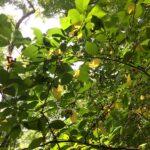
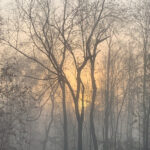
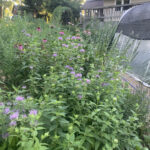
Reblogged this on Paths I Walk.
Thank you for the reblog!
Reblogged this on Good Witches Homestead.
Thank you for the reblog!
I am very grateful for this post! I developed a recipe book based on the Wheel of the Year – *Spiritual Seasonings. * https://lolawilcox.com/books/spiritual-seasonings/
The Christian church year follows the old Celtic calendar – today is the end of the year, for example, and the new year begins in winter and turns soon to reflection through Advent. The book sold out years ago, and many people find it helpful. BUT the reservations I had, that you have here, are intensified for me as we live in Costa Rica this year (Covid free). We are nearing the equator. Here, as the farm manager says, there are two seasons: summer and “Rainy Season” (winter). I’m working on how to expand the seasonal Wheel for the next version, and you just handed me an answer. Very many thanks.
On Sun, Nov 1, 2020 at 6:33 AM The Druid’s Garden wrote:
> Dana posted: “What is amazing about this wonderful planet we live on is > the diversity of ecosystems, weather, climate, and life. This diversity, > however, can be challenging for those looking to adapt druidry or other > nature-based spiritual practices to their practices” >
Hi Lolawilcox, Thanks for sharing the link to your book! That looks fabulous. I’m glad this post was helpful to you! 🙂
As usual, a beautiful, thoughtful, and helpful article. I have struggled with journaling daily and I am hoping your words here will be what I need to do so. Everything you wrote resonates deeply with me. Thank you.
Thank you! Let me know how this approach works for you :).
Dear Dana, I absolutely LOVE this idea! I am moving from Colorado to Maryland, so I get to revamp my whole year, seasonally and ecosystem-ly. Thank you for your thoughts. Regards, Lara Wolfe larawolfemoon@gmail.com
Virus-free. http://www.avast.com
On Sun, Nov 1, 2020 at 7:31 AM The Druid’s Garden wrote:
> Dana posted: “What is amazing about this wonderful planet we live on is > the diversity of ecosystems, weather, climate, and life. This diversity, > however, can be challenging for those looking to adapt druidry or other > nature-based spiritual practices to their practices” >
Hi Lara, glad you found the idea helpful! Blessings!
I enjoyed reading your post this morning. I’m in the habit of recording (mostly) daily weather; but merely as facts. Now I have a more spiritual focus as I relate the data to visual observations. I do see changes and mentally note them, but record keeping and thinking in terms of how those changes fit with the Wheel is something I haven’t been doing. Thank you for the inspiration. The day following Samhain is an excellent starting point.
Hi Brenda,
Great, so glad you like the idea :). Our day after Samhain is being met with snow later tonight, which is a great way to start this year’s observations!
Having practiced Chinese Medicine for nearly 30 years, I use the Chinese wheel of year which is more in my bones at this point. The Wu Xing has five seasons or transformations. There is Winter/Water; Spring/Wood; Summer/Fire; Late Summer/Earth(Harvest) and Autumn/Metal(Air). The Earth/Late Summer/Harvest season also manifests as the time of change between the seasons, so it is associated with those early/late parts of each season you have identified. In a pictorial layout the Earth season can lay as part of a circle between Summer and Autumn or it could be in the center with the other elements around it. Because China has the world’s oldest medical literature that goes back two thousand years, this wheel of the year is an unbroken tradition in China. Each season/tranformation has many different associations that have the same movement or resonance in nature. For example: Spring is Wood is Liver is Green is Sour is Wind. . . and so on. Winter is Water is Cold is Salty is Blue/Black is Kidney is Ancestral Jing. . .and so on. You can find many English books on the “Five Elements” which is really a mistranslation from Chinese. The Chinese word is much more active and transformations is a better translation than element.
Hi Lisa Marie,
Thank you for sharing the symbolism of the Chinese Wheel of the Year. I love the idea of “transformations” rather than thinking about it as a static element. Do you find that the 5-fold wheel works well with your ecosystem?
Yes, it works great here in Maryland.
I, too, live in Western PA. For many years I have thought the 4 seasons as an inadequate way to divide the year. I divided each season into 2, making 8 seasons. But I prefer the 12 season cycle, as 12 is such a great number for Time. Thank you!
Are you familiar with Adam Haritan, also from Western PA? Look for his Learn your Land series. He approaches Nature from a scientific standpoint, which I love to combine with the Spiritual.
I’m new to your blog and can’t wait to read back. Joanne
Hi Joanne, nice to meet you! Where in Western PA are you? I live outside of Indiana, PA near Yellow Creek State park. Small world! 🙂 I have seen Adam’s work but I haven’t met him yet. I look forward to it!
Outside of Altoona. I was just in Indiana to meet a friend (who lives in Butler) for lunch. The leaves were at their peak. It’s a beautiful area! I’m in the Armaugh area every week for bobbin lacing class.
If the plague ever ends, I’d be happy to meet up sometime! 🙂
This is just a note to say that I appreciate your site and all that you’ve shared here. Do you believe that smudging in any form, is also originally a Celtic practice?
Blessings!
Carolyn
Hi Carolyn,
Nearly all cultures had some form of smudging, smoke cleansing, or saining, and that certainly includes Celtic Cultures! “Saining’ is the Scottish folk term for smoke cleansing. Here’s a good piece on it: https://cailleachs-herbarium.com/2019/02/saining-not-smudging-purification-and-lustration-in-scottish-folk-magic-practice/. Here’s another piece from my friend Christian Brunner, who practices traditional swiss “rachn geh” (or “going fumigating”) which includes herbs and resins burned on charcoal: https://druidryblog.wordpress.com/2015/02/02/smudging-alpine-style/
Using smoke for ritual, purification, or cleansing is part of many cultures all over the world. For example, if you go to Oman or other parts of the Middle East today, you’ll find Frankincense burning in hotel lobbies and restaurants as well as temples. I think the issue with smudging becomes both the term (called increasingly into question as a Native Specific term) as well as the use of specific herbs that are now overharvested and less accessible to native peoples (see this link: https://druidgarden.wordpress.com/2019/03/31/plant-relationships-cultural-appropriation-and-connection/).
I hope this answers your question! Happy smoke clearing! 🙂